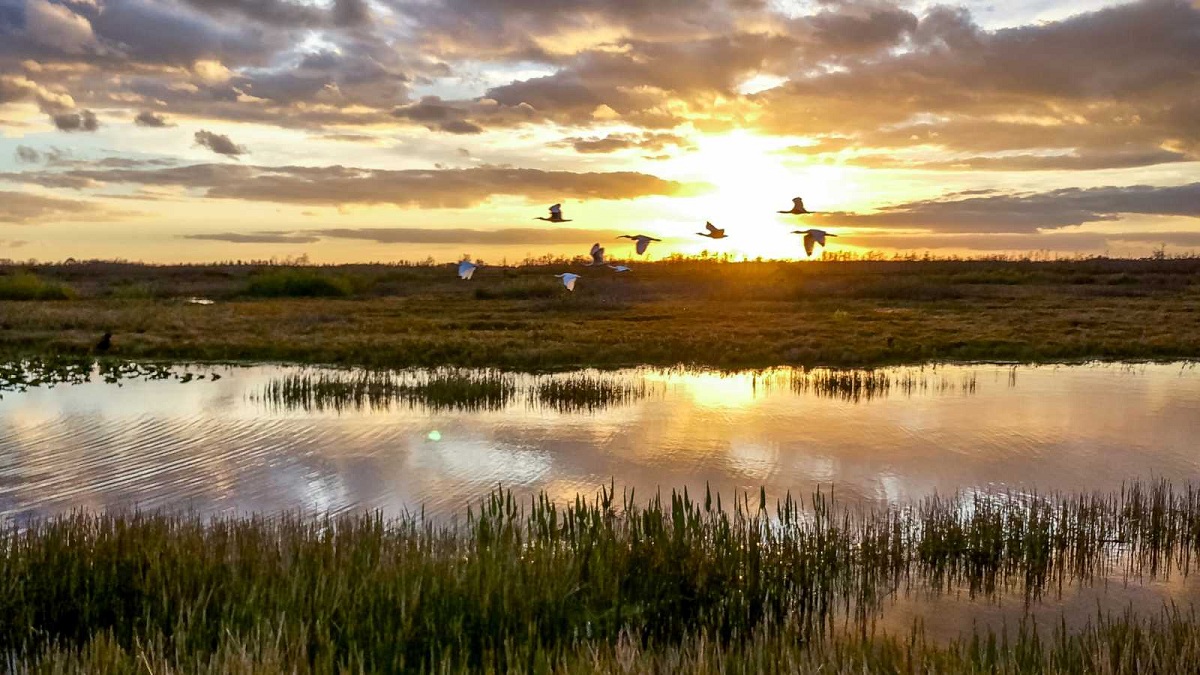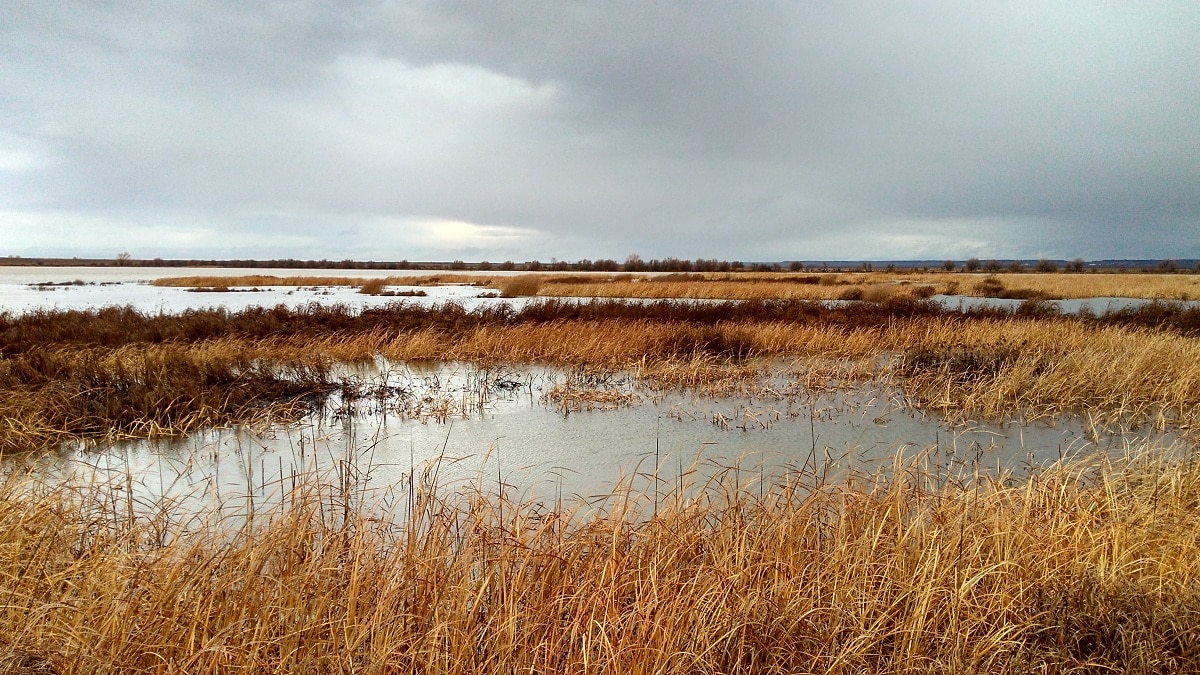
Among the natural ecosystems of great ecological importance and maintenance of biodiversity, are the wetlands. The annual goal is to make people aware of the need to protect these precious natural ecosystems. Therefore, February 2 of each year is World Wetlands Day. A wetland is an ecosystem in which the soil is permanently or periodically submerged by water. This can occur in freshwater ecosystems and in some areas with a certain degree of salinity.
In this article we are going to tell you what wetlands are, what are their main characteristics and how important they are.
What is a wetland
It is a natural ecosystem, with ecological balance, based on a soil regularly or permanently submerged by floods. These ecosystems can appear in places where there is fresh water or where there is salt water. Due to these characteristics, wetlands can maintain a large amount of biodiversity and endow the natural wealth with an incomparable biodiversity.
World Wetlands Day emphasizes the importance of wetlands because they are important to our future sustainable livelihoods. Wetlands can be natural or man-made. Certain types of natural wetlands can expand into swamps, some swamps and their riparian areas, peatlands, etc. On the other hand, we can see artificially created or modified wetlands. Whenever environmental conditions permit, can artificially retain moisture temporarily and permanently.
In general, these types of constructed wetlands are built to protect biodiversity at risk of extinction. It is also used for tourism purposes to provide environmental services and help spread the value of nature protection.
Types of wetlands
Because these wetlands are very rich, they have become important tools for protecting nature. There are different types of wetlands, and they are classified according to the type of water that makes them up and other characteristics that we must follow. The main difference between the types of wetlands is the type of water. We discover freshwater wetlands and saltwater wetlands. We can also distinguish between natural wetlands and man-made wetlands.
Let's see what the different types of wetlands are:
- River wetland: It is a wetland with natural characteristics and type of fresh water. They are usually made up of rivers, streams, and waterfalls.
- Lake wetlands: They are formed through lakes and some natural freshwater lagoons.
- Tropical palustres: Includes areas with small springs, oases, floodplains, swamp forests, swamps, and bogs. The main characteristic of this type of wetlands is that they all have natural sources and the water is fresh.
- Marine wetlands: As the name suggests, they are natural wetlands, but they are made up of salt water. They usually appear in coastal environments where the sea is shallow, such as some rocky, sandy beaches and some gravel areas.
- Artificial: are those wetlands that are generated from the works of the human being with the aim of storing or controlling a certain volume of water. Here we can see the reservoirs and dams. They may also have the objective of preserving a certain amount or species of protected flora and fauna.
- Estuaries: many rivers form estuaries before their final mouths and some wetlands are generated. Their main characteristic is that they are composed of salty water from estuaries and it is of natural origin. Sometimes it is capable of forming saltwater swamps or mangrove areas.
- Saltwater lake wetlands: It looks a lot like the previous ones, but both the lakes and lagoons are brackish as they are found in coastal areas. They also have a natural origin.
Key features

For an ecosystem to be considered a wetland, it must meet the following characteristics:
- Are considered transition areas or gradual changes between aquatic and terrestrial systems. That is, they are considered mixed ecosystems because they preserve some of the characteristics of one ecosystem and another. We found that some parts are more focused on terrestrial ecosystems, while others are more focused on marine ecosystems.
- They are flood zones, so they can be temporary or permanent areas. Temporary areas appear in places with small depressions, which flood easily when it rains heavily.
- Wetland waters must be stagnant water, small streams, fresh water or salt water, and include small oceanic areas with a certain depth. The tidal effect of wetlands is very low. Usually this effect will not exceed 6 meters.
- The limit of a wetland will be determined by its type of vegetation in each terrain. The vegetation is hydrophilic, that is, it needs a good tendency to water. It is also possible to distinguish between non-hydrophilic vegetation and vegetation that represents the boundary of a wetland, where another ecosystem ends and begins with a completely terrestrial environment.
- Wetlands are ideal habitats for a large number of speciesespecially migratory birds that feed and rest in wetlands around the world. We can also find plants and animals such as mammals, reptiles, amphibians, fish and insects.
Ecological importance of wetlands
The wetland is a very important ecosystem for the normal functioning of nature. They are capable of harboring the biodiversity of a large number of birds, fish and other groups of animals. They also develop plants that depend on water.
If we add value to the human world, wetlands can create areas for food production and require a lot of water to grow, just like rice. Other factors that are very important to maintain humidity are the regulation of the hydrological cycle, including the surface and aquifers. It is also actively involved in erosion control and the regulation of nutrient cycles.
For this reason, the vast majority of wetlands have a protection regime considered as a nature reserve. In this and power category of protection regime economic activities are limited to research and the entrance of tourists that is very controlled. All this is done to conserve the maximum biodiversity.
I hope that with this information you can learn more about what wetlands are and what is their importance.

